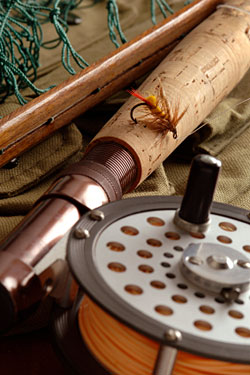What’s So Hard About Gear Reviews?
Have a question you want answered? Email it to us at [email protected].
Question: How come most fly-fishing magazines don’t really do gear reviews? I’d love to know what experts think of all this stuff.
Wade E., Anchorage, AK
Answer: If you ask the cynical wing of the fly-fishing community, they’ll tell you that magazines don’t review products because they are afraid of losing advertisers. (Although the cynical wing of the magazine business may respond, “What advertisers?”) The fact is, none of the top four or five magazines operates this way. There’s no nefarious quid pro quo, in which editors agree to puff a product just to win advertising revenues. Aside from the ethics of such an agreement, editors know that their readers aren’t stupid. If a magazine were to positively review a product that failed in the field, the losses in reputation and circulation would far outweigh the short-term financial gain.
 There are two main reasons that you don’t see in-depth reviews of fly-fishing gear in most magazines:
There are two main reasons that you don’t see in-depth reviews of fly-fishing gear in most magazines:
1. What’s the standard? You may love a fly rod that I think is tip-heavy or noodly. Someone like Lefty Kreh—who possesses uncanny strength and timing—will experience a rod differently than you and I would. Every rod behaves somewhat differently for every caster, based on the individual casting stroke—where power is applied, the length and rate of acceleration through the movement, and how sharp the stops at the end of each forward cast and backcast are. Some rods may perform well for expert casters but not so well for novices, and vice versa.
So, we can judge a rod’s construction, workmanship, and aesthetics, but until you’ve held the rod in your hand and thrown a line, nothing a reviewer says will be particularly valid. In fact, I would argue, a reviewer can prejudice a caster. If you’ve read that a rod is too stiff in the butt, you may be overly sensitive to that part of the rod when you test-cast it.
2. Testing time. There’s really no way to evaluate the performance of many products until you’ve used them for some time, and the staffs of these magazines are too small to afford that much time. If you are asked to review a new reel from your desk, what is there to say about it? “It’s round. When you turn the handle one way, line comes in. You can make it easier or harder to pull line out. It’s silver. The end.” And what about waders? How can a reviewer test if they’re durable and comfortable without fishing in them for a few days?
The only person doing real-life testing of gear for magazines is Ted Leeson, whose reviews in Fly Rod & Reel are about as good as you can get. Ted spends a month on the Madison each summer, and he tries out all the gear in real-world circumstances. As such, he has probably the best insights into the pros and cons of the items he writes about. But of course, it’s still just one man’s opinion.
At the end of the day, it’s nearly impossible for magazines to do meaningful reviews of fly-fishing gear. Your best bet is to talk to fellow anglers and do research on the Web, soliciting information from folks who have used a product for a long time, and spend a fair amount of time in fly shops, actually handling and trying out the gear you’re thinking of buying. There are also lots of other factors—brand loyalty, prestige, price, etc.—that could never be part of a review but play big roles in purchasing decisions. Ultimately, any time you lay down that credit card to buy something new, you’re making an act of faith.











